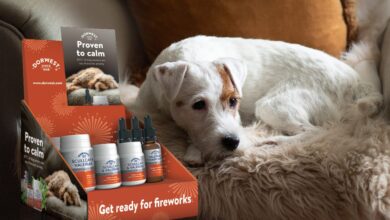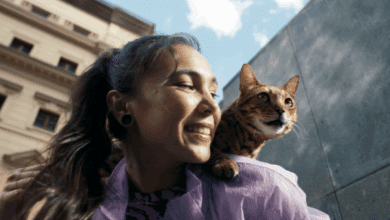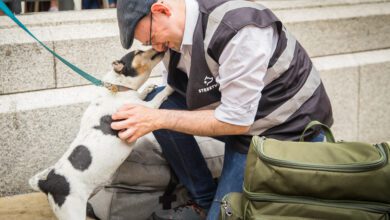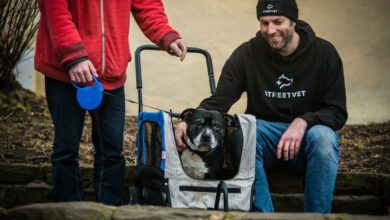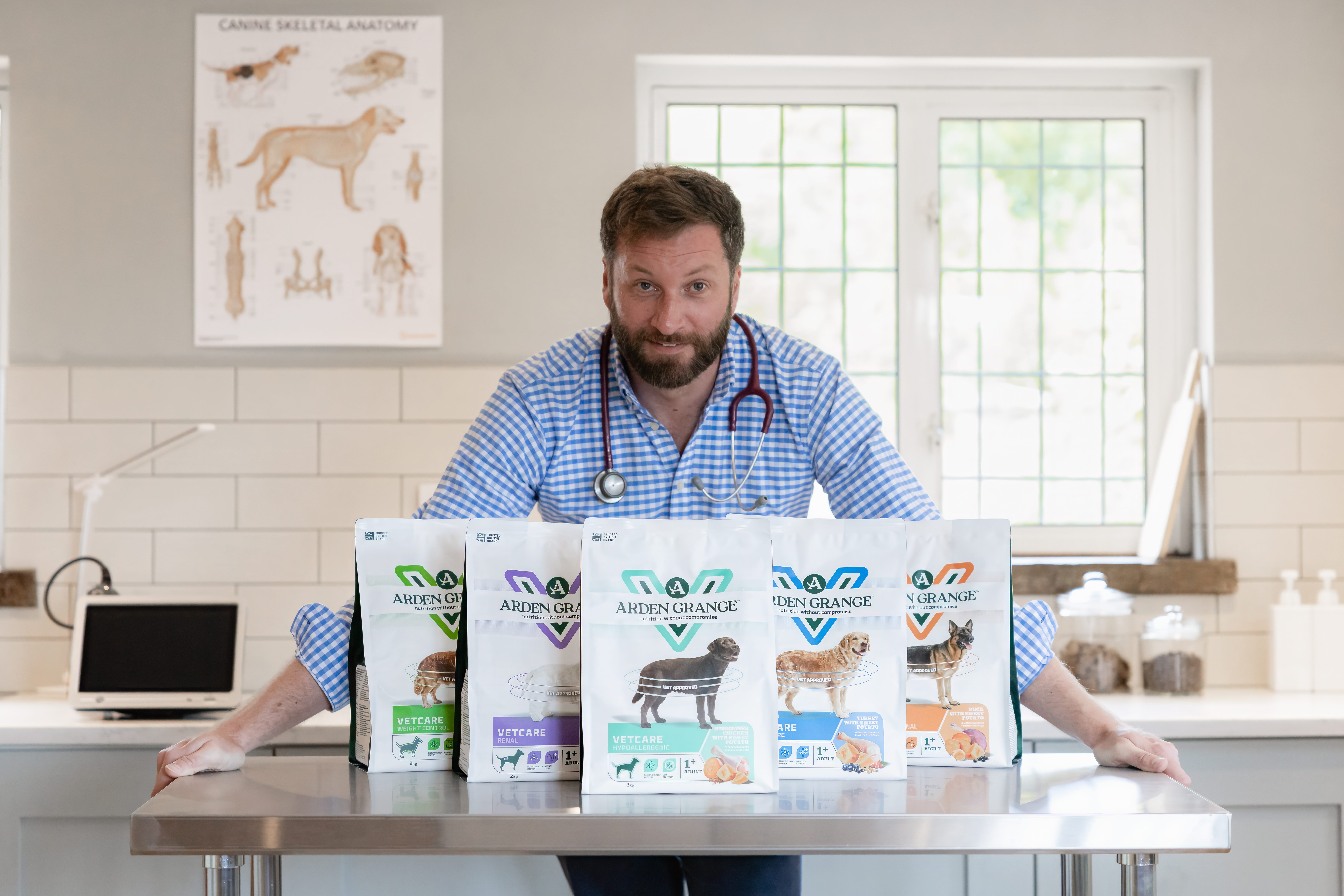How do you keep your pet hydrated during the winter months?
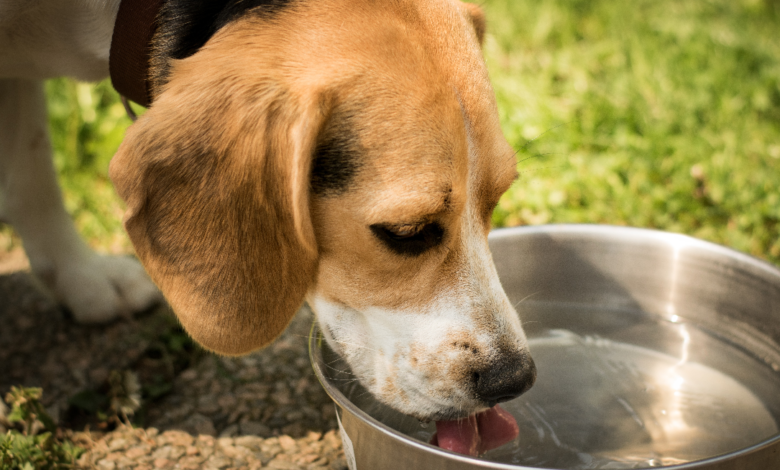
Register to get 1 free article
Reveal the article below by registering for our email newsletter.
Want unlimited access? View Plans
Already have an account? Sign in
While we know how to take care of ourselves during the colder months, we can sometimes forget that, at this time of year, our pets will need a little extra TLC too. Harsh temperatures can cause a number of complications for pets, so owners should take extra care to ensure that their pet remains safe and healthy throughout these months.
Winter Dehydration
Dehydration in the winter is a huge concern. The humidity in the air decreases, causing it to become far drier, meaning your pet may need more fluid than usual to regulate its health. Advice varies from animal to animal; however, regardless of species, easy access to clean, fresh water is key.
Dogs and cats:
- Keep food and water bowls separate and place multiple water bowls down around the house. For older cats and dogs with mobility problems, try raising the bowl on a step or block. Cats tend to prefer shallow bowls, so they can see around them, and also prefer their whiskers not to touch the sides of the bowl.
- If your cat is still not drinking, then try offering them water from a tap or drinking fountain instead.
- Remember, foods can hydrate your pet, too. If your pet is not eating, try making a light broth (without garlic or onion) to put on their food, or use strong smelling foods if their appetite has gone (e.g. sardines or mackerel in tomato sauce). It can also help to ensure that there is peace and quiet when your pet eats, to give it more confidence.
- Make sure your pets bowl is cleaned after each use to encourage them to eat or drink. I’d also suggest using glass or ceramic bowls for water and food. Plastic can have an unpleasant smell to pets, putting them off eating and drinking.
- Place food and water bowls out of the line of sight of other cats, even those that are outside.
Rabbits and rodents:
- Grass and fresh greens may be in shorter supply over winter. As a result, rabbits will be eating more hay and so will therefore need to drink more water.
- Hydration is very important for the gastrointestinal and urinary systems in these animals in particular. As such, it is a good idea to provide both a bowl and a bottle of water, which are cleaned and changed daily, ensuring they are free of slime.
Dehydration in winter is a key concern for all pets, but for dogs in particular there are many other factors to take into consideration. The following tips will show you how to protect your dog from winter temperatures.
Warmer walks: Although walking may be far less appealing in the cold and dark, it is vital that you exercise your dog, keeping it warm along the way. Make sure to think about the length of your dog’s coat, and trim the fur between its toes, as ice can easily accumulate here and cause pain or temporary lameness. Depending on the dog’s hair length and thickness, you may need to think about getting them a warm coat.
To help them understand and get used to wearing a coat, you can try using treats to reinforce this behaviour. If you are using treats, don’t forget to reduce their food portion or take the treats out of their food allowance.
Visibility: Visibility can be skewed, especially with darker days and frost, so the use of high- vis items is key to protecting you and your pet from potential hazards. Many vehicles will find it harder to stop in the winter, due to the ice on the roads, so it is essential that you take steps to be as visible as possible.
Clean and dry: After your dog has been out for a walk, use a clean, damp cloth to wipe down their feet, legs, and stomach. Check between their toes for dirt and debris, or compacted ice and snow. Salt from the road can irritate their skin and paws so remember to rinse them off with warm water and dry thoroughly afterwards.
Calories: It is important that dogs keep a healthy, consistent weight all year round, as fluctuations can be hazardous. Remember to alter your dog’s food according to the exercise they’re doing.
Pain: Older dogs, especially those with joint pain, can struggle more in the cooler, damper weather. If you are concerned that your dog is slowing down or in pain, please contact your vet or make an appointment through FirstVet (www.firstvet.com) to discuss this. Keeping older dogs’ nails and paw hair clipped short will help them be more stable when walking. It is important that dogs with arthritis keep moving, no matter the weather, in order to keep their joints lubricated and mobile. If it is too cold outside, try encouraging them to move around inside.
Frozen ponds: Keep all dogs on a lead around frozen watercourses, to prevent them slipping or falling into the water.
Cars and travel: Never leave your dog in a car during cold conditions as their body temperature can drop very quickly. Some owners may open the window slightly to ensure air circulation, but this only causes more potential issues, such as hypothermia.
Heat sources: If your dog has difficulty staying warm during the winter weather, try moving their bed closer to a radiator or a source of warmth – but remember to check that they’re not overheating! Adding a thick blanket to provide extra insulation can help too. Always make sure they are sleeping in a draft free area, too.
Meal times: For dogs that don’t have much of an appetite, you can try to make their food more entertaining by putting it in a KONG. If it isn’t too cold outside, you can scatter part of their food on your patio or lawn, getting them to sniff around looking for it, or try hiding food in several locations around the garden and let them hunt for it.


